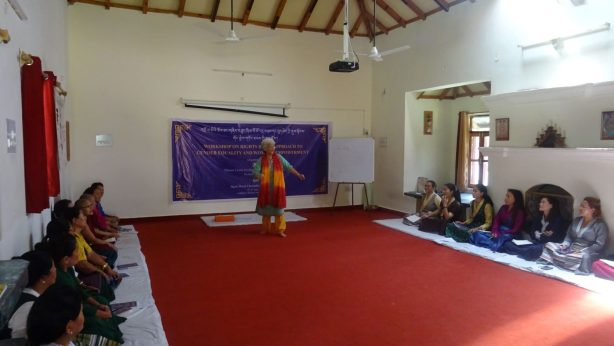TCHRD report documents crisis of maternal and child health in Tibet
On 4 March 2015 the Tibetan Centre for Human Rights and Democracy (TCHRD) released a special report on the right to health, entitled In the Shadow of Development: Maternal and Child Health in Crisis in Tibet. The report documents how a failing system of public healthcare has permitted extremely poor maternal and child health to persist in Tibet, despite drastic improvements in conditions in the People’s Republic of China (PRC).
The report reveals that rural-living Tibetan women and children bear some of the highest risks in the PRC for birth-related illness and death, and finds that maternal and child health in Tibet is the worst in the PRC by a wide margin. In the Tibet Autonomous Region (TAR) in 2009, maternal and infant mortality were the highest in the PRC, 8 and 2.7 times higher than the national average, respectively. Severe child malnutrition, at 3.6%, was over twice as high. Life expectancy in the TAR was 8.5 years shorter than average and the lowest in the PRC.
Risk assessment performed in this report finds that Tibetan women and children in the Tibet Autonomous Region (TAR) and Tibetan Autonomous Prefectures in Gansu, Qinghai, Sichuan, and Yunnan Provinces are at very high relative risk of illness and death as a result of four major factors. These factors are: 1. high rates of poverty; 2. widespread lack of general and health education; 3. geographic isolation from healthcare; and 4. significant cultural disincentives to health services utilization.
The report finds that poor health is the result of a severely inadequate system of public healthcare. In the TAR in 2009, 33% of women and 41% of children received systematic healthcare – the lowest rates of care in the PRC and almost half the national average. Healthcare is worst in rural communities, where underfinancing of the health system, scarce obstetric care facilities, and shortages of qualified obstetric doctors severely limit financial and geographic access to services. Where healthcare is accessible, service utilization by patients is limited, and the quality of care is often poor. Such issues are compounded by the high rates of poverty and poor education affecting many rural Tibetan communities.
The report determines that the PRC’s neglect of maternal and child health in Tibet constitutes a clear violation of Tibetans’ right to health. It also demonstrates how poor health conditions in Tibet are masked by evaluations of health in the PRC, which largely consider aggregate national data. Most notably, the UN Millennium Development Goals campaign has failed to apprehend the severity of health inequity between Tibet and the PRC. Therefore, although maternal and child health appears to have improved greatly throughout the PRC, Tibetan women and children continue to bear highly disproportionate burdens of the PRC’s mortality.
Poor conditions in rural areas are attributed to two failures of the PRC’s centralized clinical model of health services delivery (a system by which healthcare services are delivered via clinics and hospitals at the township, county, and provincial levels). First, the centralized system excludes the most disadvantaged rural populations from the system of healthcare by failing to ensure service coverage – even for critical services such as skilled birth attendance and emergency obstetric/neonatal care. Second, the decentralized nature of health system financing has resulted in the poorest counties having the worst funded systems of healthcare. Further issues with the rural healthcare system, such as the inaccessibility of health clinics and obstetric doctors, and the poor training of healthcare personnel, also impoverish health conditions in Tibet. Demand-side structural determinants of health, such as rural and remote inhabitancy, poverty, limited education, and sociocultural beliefs/norms also create major barriers to adequate healthcare in many Tibetan communities. The most serious barrier is severely limited patient access to healthcare services, however limited patient utilization of available health services, and the poor quality of health services also lead to poor maternal and child health.
Despite these challenges, maternal and child health in Tibet can be transformed. The report offers a model for the achievement of sustainable, equitable, and high quality maternal and child health in Tibet. It argues for broad, government-led intervention that combines improvement to the existing clinical system with the development of a community health worker-based system of decentralized rural health services delivery. The model incorporates the strengths of three highly effective maternal and child health programs in Tibet, and focuses on increasing access to healthcare, increasing utilization of available health services, and the improvement of health services quality. If the government of the PRC does not intervene however, the inequity in healthcare and widespread mortality currently faced by the women and children of Tibet will continue unabated.
Ultimately, the report demonstrates that poor maternal and child health in Tibet is not a problem for development, but a miscarriage of social justice and human rights.
Click here to access the full text of the special report on Maternal and Child Health Crisis in Tibet.

